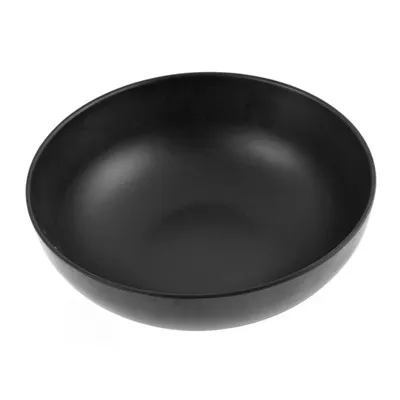-
Cangzhou Yulong Steel Co., Ltd.
-
Phone:
+86 13303177267 -
Email:
admin@ylsteelfittings.com
- English
- Arabic
- Italian
- Spanish
- Portuguese
- German
- kazakh
- Persian
- Greek
- French
- Russian
- Polish
- Thai
- Indonesian
- Vietnamese
- Zulu
- Korean
- Uzbek
- Hindi
- Serbian
- Malay
- Ukrainian
- Gujarati
- Haitian Creole
- hausa
- hawaiian
- Hebrew
- Miao
- Hungarian
- Icelandic
- igbo
- irish
- Japanese
- Javanese
- Kannada
- Khmer
- Rwandese
- Afrikaans
- Albanian
- Amharic
- Armenian
- Azerbaijani
- Basque
- Belarusian
- Bengali
- Bosnian
- Bulgarian
- Catalan
- Cebuano
- China
- China (Taiwan)
- Corsican
- Croatian
- Czech
- Danish
- Esperanto
- Estonian
- Finnish
- Frisian
- Galician
- Georgian
- Kurdish
- Kyrgyz
- Lao
- Latin
- Latvian
- Lithuanian
- Luxembourgish
- Macedonian
- Malgashi
- Malayalam
- Maltese
- Maori
- Marathi
- Mongolian
- Myanmar
- Nepali
- Norwegian
- Norwegian
- Occitan
- Pashto
- Dutch
- Punjabi
- Romanian
- Samoan
- Scottish Gaelic
- Sesotho
- Shona
- Sindhi
- Sinhala
- Slovak
- Slovenian
- Somali
- Sundanese
- Swahili
- Swedish
- Tagalog
- Tajik
- Tamil
- Tatar
- Telugu
- Turkish
- Turkmen
- Urdu
- Uighur
- Welsh
- Bantu
- Yiddish
- Yoruba

Nov . 26, 2024 20:25 Back to list
Comprehensive Guide to EN1092 Flange Dimensions and Specifications
Understanding EN 1092 Flange Dimensions A Comprehensive Guide
Flanges are crucial components in various piping systems, providing a reliable method to connect pipes, valves, and other equipment. Among the numerous standards governing flanges globally, the European Norm (EN) 1092 is one of the most widely recognized and utilized. Understanding the dimensions and characteristics of EN 1092 flanges is essential for engineers, designers, and maintenance personnel in ensuring effective and safe piping operations.
What is EN 1092?
EN 1092 is a European standard that specifies the requirements for flanges used in piping systems. It covers different types of flanges, including welded neck, slip-on, blind, threaded, and lap joint flanges among others. The standard provides detailed specifications, including material properties, dimensions, and marking requirements. The EN 1092 standard is crucial in ensuring compatibility and interchangeability in various applications, especially in industries such as oil and gas, water treatment, and process engineering.
Flange Types and Their Dimensions
EN 1092 specifies several types of flanges, each designed for specific applications
. Here we will discuss the most common types along with their dimensional standards.1. Weld Neck Flanges (Type 11) These are designed to be welded to the end of a pipe. They provide high strength and better alignment, making them suitable for high-pressure and high-temperature applications. The dimensions, including outside diameter and bolt circle diameter, are key to ensuring a proper fit.
2. Slip-On Flanges (Type 12) These flanges slip over the pipe and are typically welded in place. They are easier to install compared to weld neck flanges but are generally used in lower pressure and temperature applications. EN 1092 specifies detailed dimensions such as the thickness, outside diameter, and drilling specifications to accommodate various bolt sizes.
3. Blind Flanges (Type 13) Blind flanges are used to seal the end of a piping system. They do not have a hole for a pipe and are essential for maintaining pressure in pipelines. The dimensions specified ensure the flanges can withstand the required pressure ratings.
4. Lap Joint Flanges (Type 14) These flanges are used in conjunction with a stub end, allowing for easy disassembly. They are often used in applications where frequent dismantling is necessary. EN 1092 provides dimensions that help in achieving a good fit with the stub end.
en1092 flange dimensions

5. Threaded Flanges (Type 15) As the name suggests, these flanges have internal threads and can be attached without welding. This makes them suitable for applications where welding is not viable. The dimensions are specified to ensure compatibility with the respective pipes.
Dimension Standards
The EN 1092 standard outlines the dimensions in terms of millimeters (mm), and it specifies details like
- Nominal Diameter (DN) Represents the pipe size that the flange is designed to fit. - Pressure Rating (PN) Indicates the maximum allowable pressure, which can significantly influence the flange dimension specifics. - Bolt Holes The number of bolt holes, their diameter, and spacing are precisely defined to ensure a reliable connection.
These specifications reduce the risk of leaks and mechanical failures, thereby ensuring safety in the operation of piping systems.
Importance of Adherence to Standards
Adhering to the EN 1092 standard is vital for manufacturing and operation. It ensures that the flanges will perform adequately under specified conditions while also allowing for interoperability among components from different manufacturers. Not only does this facilitate easier maintenance, but it also enhances the overall safety and reliability of piping installations.
Conclusion
In summary, EN 1092 sets forth essential guidelines for flange dimensions that are fundamental for piping applications across various industries. Understanding these dimensions, types, and standards helps professionals to select the appropriate flange for their specific needs. Whether working in oil and gas, chemicals, or water treatment, familiarity with EN 1092 flange dimensions is critical to ensuring safety, performance, and efficiency in operations. By adhering to these standards, engineers and designers can facilitate effective system designs that meet stringent regulatory requirements and industry best practices.
Latest news
-
ANSI 150P SS304 SO FLANGE
NewsFeb.14,2025
-
ASTM A333GR6 STEEL PIPE
NewsJan.20,2025
-
ANSI B16.5 WELDING NECK FLANGE
NewsJan.15,2026
-
ANSI B16.5 SLIP-ON FLANGE
NewsApr.19,2024
-
SABS 1123 FLANGE
NewsJan.15,2025
-
DIN86044 PLATE FLANGE
NewsApr.19,2024
-
DIN2527 BLIND FLANGE
NewsApr.12,2024
-
JIS B2311 Butt-Welding Fittings LR/SR 45°/90° /180°Seamless/Weld
NewsApr.23,2024











